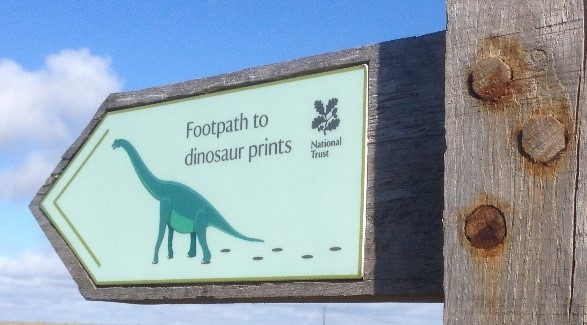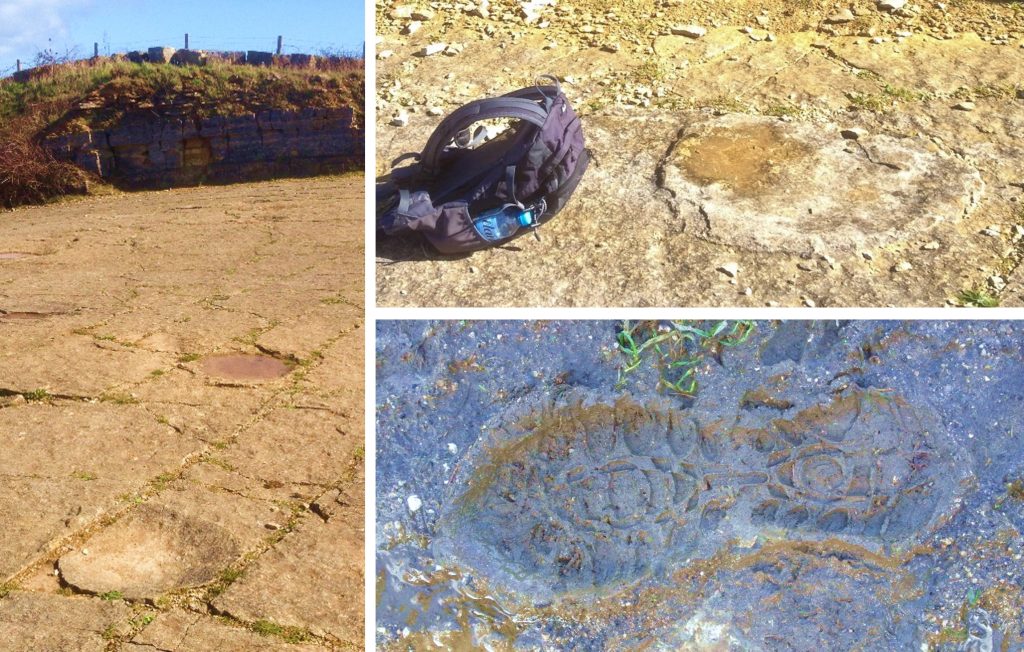Just off the Priests Way footpath in South Dorset, a set of about 20 well-preserved dinosaur prints can be found scattered along an exposed bedding plane within a small, easily-accessible quarry. The prints were discovered by a local quarryman, Trev Haysom, while working in the Keates Quarry during January 1997. The quarry is now open to visitors, preserved and maintained by the National Trust.

The prints are thought to have been left by Brachiosaurus Sauropods walking beside a shallow, freshwater lagoon about 145 million years ago during lowermost Cretaceous times. Individual prints are approximately circular with diameters between 30 to 50cms and seem to be distributed at random across the quarry. The prints are usually separate from each other with very few overlapping impressions. However, it is not possible, for me anyway, to estimate any individual trackways across the surface. A common, and possibly important, characteristic of each print is that the edges are elevated as if the mud has been squished (to use a technical term) sideways from beneath the dinosaur imprint. There is no sense of fast movement just an impression of slow, peaceful walking or standing in quiet contemplation, as might be expected with animals weighing between 40 to 50 tonnes!

An information board at the site raises the question whether the preserved prints are ‘primary’ in origin, made at the surface of the lagoon, or ‘transmitted’, made and preserved within slightly deeper layers beneath the lagoon surface. My own footprint (made carefully for scientific purposes in a muddy puddle on the way home and in no way to be taken as a serious analogy) with it’s clear peripheral, elevated (squished) ring, might support the former explanation. However, I am no soft-sediment deformation expert, so, if you visit the site, see what you think. It is well worth a visit and the famous ‘Square & Compass’ pub, originating from the 18th century and renowned for its award-winning beers and ciders and homemade pasties, is not far away in Worth Matravers.
John Donato, 2022


